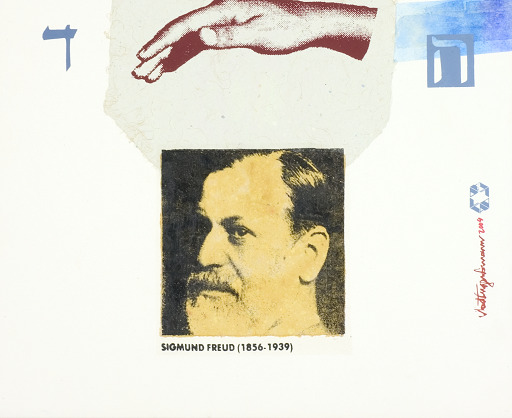La sagrada ilegalidad de Rut
Una propuesta de traducción y relaciones con Shavuot.
DOI:
https://doi.org/10.35699/1982-3053.2024.51933Palabras clave:
Shavuot, Biblia hebrea, Traducción comentadaResumen
Este artículo tiene como objetivo discutir las posibilidades interpretativas que puede asumir la lectura de Meguilat Rut como parte intrínseca de la festividad de Shavuot. A partir de una traducción original con comentarios de los autores, se propone un análisis literario que explora las controvertidas interpretaciones de las ambigüedades de los personajes y tramas dado el carácter dual de la fiesta de Shavuot: con las relaciones agrícolas pre-segundo templo; y con la relación con la entrega de la Torá después del segundo templo.
Descargas
Citas
ALTER, Robert. Arte da narrativa bíblica. São Paulo: Companhia das Letras, 2007.
ALTER, Robert. The Hebrew Bible: A Translation with Commentary: Writings. W.W. Norton & Company, 2018. ANZI, Achia. Migration, exile, and homecoming in the book of Ruth. Open Theology, v. 7, n. 1, p. 514-530, 2021. BÍBLIA HEBRAICA STUTTGARTENSIA. Deutsche Bibelgesellschaft, 1997.
DAVIDSON, Benjamin. The Analytical Hebrew and Chaldee Lexicon. 15ª ed. Peabody: Hendrickson Publishers, 2014. FERREIRA, C. A. P. Livro de Ruth: a narrativa refletindo as questões da mulher e as medidas socioprotetivas. Teoliteraria:- Revista de Literaturas e Teologias, v. 10, n. 22, p. 539–577, 2020. disponível em: https://doi.org/10.23925/2236-9937.2020v22p539-577 HARRIS, R. Laird; ARCHER, Gleason L.; WALTKE, Bruce K. Dicionário internacional de Teologia do Antigo Testamento. Tradução de Márcio Loureiro Redondo, Luiz Alberto Sayão, Carlos Osvaldo Pinto. São Paulo: Vida Nova, 1998.
JACHTER, Rabbi Chaim. From Chaos to Kingship: An In-Depth Exploration of Megillat Rut. New Jersey: Torah Academy of Bergen County, 2022. JACKSON, Bernard S. Law and Narrative in the Book of Ruth: A Syntagmatic Reading. SSRN, 2016. Disponível em: http://dx.doi.org/10.2139/ssrn.2892196
KOEHLER, Ludwig; BAUMGARTNER, Walter. The Hebrew and Aramaic Lexicon of the Old Testament. Leiden: Brill, 2000.
LARONDELLE, Hans K. Nosso Criador Redentor: uma introdução à teologia bíblica da aliança. São Paulo: Editora TMR, 2016.
LINAFELT, T. Narrative and Poetic Art in the Book of Ruth. Interpretation: A Journal of Bible and Theology, v. 64, p. 117–129, 2010. Disponível em: https://doi.org/10.1177/002096431006400202
MIDRASH. Sefaria. Disponível em: < https://www.sefaria.org/texts/Midrash >. Acesso em: 20 mar. 2024. NUNES JR., Edson M.; GRUBER, Gabriel D. Uma Análise Narrativa de Juízes 3:12-30. Vértices, n. 21, 2019. Disponível em: https://doi.org/10.11606/issn.2179-5894.i21p1-15 OZ, Amós; OZ-SALZBERGER, Fania. Os judeus e as palavras. São Paulo: Editora Companhia das Letras, 2015.
SCHÖKEL, Luís Alonso. Dicionário Bíblico Hebraico-Português. 6ª ed. São Paulo: Paulus, 2014.
SOUTHWOOD, K. E. Will Naomi’s Nation be Ruth’s Nation?: Ethnic Translation as a Metaphor for Ruth’s Assimilation within Judah. Humanities, 3, p. 102-131, 2014. Disponível em: https://doi.org/10.3390/h3020102
STEINSALTZ, Rabbi Adin Even-Israel. Ruth Megillat. Jerusalém: KOREN. 2019. Disponível em: https://www.steinsaltz- center.org.il/vault/MegillatRuth/Ruth_English.pdf. Acesso em: 14 mar. 2024.
TANAKH. Sefaria. Disponível em: < https://www.sefaria.org/texts/Tanakh >. Acesso em: 20 de Março de 2024.
TURNER, Laurence. Anúncios de Enredo em Gênesis. São Paulo: Editora TMR, 2017.
Descargas
Publicado
Cómo citar
Número
Sección
Licencia
Derechos de autor 2024 Arquivo Maaravi: Revista Digital de Estudos Judaicos da UFMG

Esta obra está bajo una licencia internacional Creative Commons Atribución 4.0.
Os direitos autorais pertencem exclusivamente aos autores. Os direitos de licenciamento utilizados pelo periódico é a licença Creative Commons Attribution 4.0 (CC BY 4.0): são permitidos o compartilhamento (cópia e distribuição do material em qualquer meio ou formato) e adaptação (remix, transformação e criação de material a partir do conteúdo assim licenciado para quaisquer fins, inclusive comerciais.






